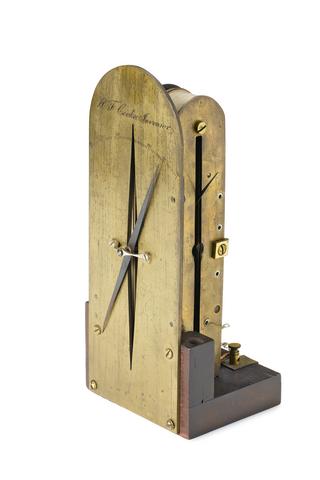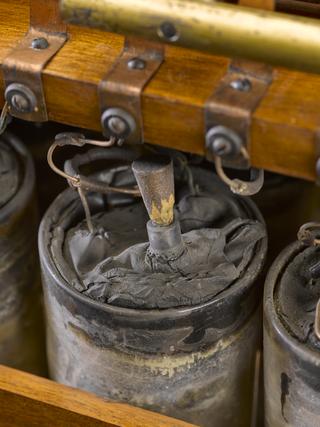
Ferranti Steam Alternator
- Made:
- 1900 in Hollinwood, Bradford and Elland
- maker:
- S Z de Ferranti Limited










Inverted vertical cross-compound steam engine, made by S. Z. de Ferranti Ltd, Hollinwood, 1900 and fitted with a Siemens alternator. Also known as a 'Ferranti Steam Alternator.' Speed 300 rpm, power output 334 horsepower.
Before steam turbines were developed, large reciprocating steam engines like this were the most important means of generating alternating electric current. This engine originally generated electricity at Lambeth Power Station in London. Instead of a flywheel, it was fitted with an alternator which convert the movement of the engine into electricity. This engine was a very advanced design for 1900. It had pressurised lubrication to all main bearings and balance weights fitted on the crankshaft. These features ensured that it would run smoothly at the (then) very high speed of 300 rpm required to generate alternating current at the standard rate of 50 cycles per second.
Once the engine was no longer required to make electricity, it was sold to J. H. Gillet & Sons Ltd for use as a mill engine at Brunswick Mill in Chorley, where the original alternator was removed and replaced by a 6-ft diameter flywheel. When it was acquired by the museum in the 1980s, a Siemens flywheel alternator was fitted to demonstrate the original use of the engine. This engine is the only remaining reciprocating steam engine and flywheel alternator set still existing in the world.
Details
- Category:
- Electricity Supply
- Object Number:
- Y1996.10.1453
- Materials:
- cast iron and brass (copper, zinc alloy)
- Measurements:
-
overall: 3800 mm x 4800 mm x 4400 mm,
- type:
- steam engine
- credit:
- Gift of Ferranti International Signal plc




